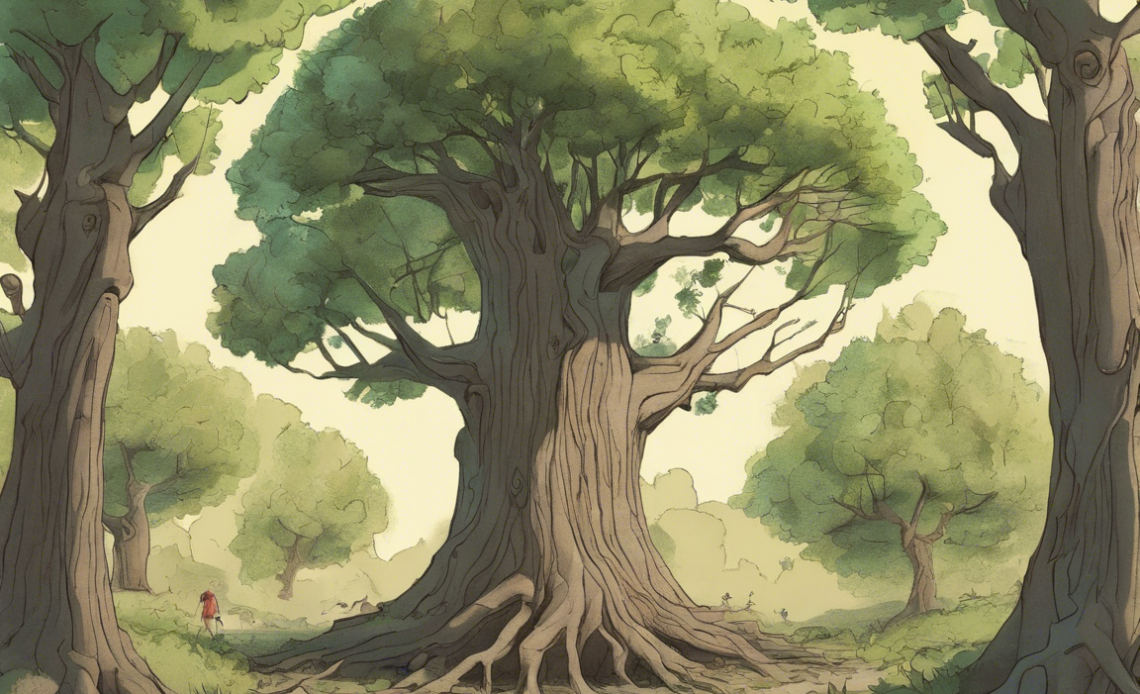
Introduction
Imagine a world where the rustling leaves tell stories of ancient wisdom, the sturdy trunk stands tall as a testament to resilience, and the roots delve deep into the earth, connecting with the very heart of nature. Trees, with their silent language and grounded presence, have long captured the imagination of poets, writers, and nature enthusiasts alike. In this poetic journey, we will delve into the world of trees from a unique perspective – if I were a tree.
The Seed of Existence
Every tree begins as a seed, a tiny vessel of potential waiting to unfurl. If I were a tree, I would embrace the darkness of the earth as my cradle, pushing through the soil with a quiet determination. The first tendrils of roots reaching out like exploring fingers, seeking sustenance and stability. In this moment of quiet emergence, there is a sense of anticipation, of infinite possibilities held within the confines of a small, unassuming seed.
Growing Towards the Light
As I grow, my branches would stretch towards the sky, reaching for the sun’s warm embrace. Each leaf a quivering testament to the dance of photosynthesis, a silent song of transformation as sunlight turns into sustenance. The passage of time marked by the growth rings on my trunk, a visual diary of years lived in harmony with the changing seasons. Through storms and sunlight, my branches would sway in an eternal conversation with the elements, bending but never breaking.
The Symphony of Seasons
I would bear witness to the symphony of seasons, each one painting the world around me in vibrant hues. In spring, my buds would burst forth in a riot of green, a celebration of renewal and rebirth. Summer would bring the lazy drone of bees and the whisper of leaves in the gentle breeze. Autumn’s fiery palette would transform the landscape into a canvas of golds and reds, a final burst of glory before the quiet slumber of winter. Through it all, I would stand steadfast, a silent sentinel amid the ever-changing tapestry of nature.
Guardian of the Earth
If I were a tree, my roots would anchor me to the earth, a lifeline of connection to the land that birthed me. Through my symbiotic relationship with the soil and the myriad creatures that call the forest home, I would be a guardian of life. Providing shelter to birds, sustenance to insects, and shade to weary travelers, my presence would be a testament to the interconnectedness of all living things. In this quiet role of stewardship, I would find my true purpose – not to conquer or dominate, but to coexist in harmony with the web of life.
Wisdom in Silence
I would speak in whispers, my language the rustle of leaves, the creak of branches, the sigh of wind through my boughs. In this silence, there is a deep wisdom that transcends words, a knowing that comes from centuries of observation and adaptation. If I were a tree, I would listen more than I speak, attuned to the rhythms of nature and the subtle signs of change. Through this silent communion, I would learn the language of the earth and find solace in the symphony of life that surrounds me.
Frequently Asked Questions (FAQs)
1. How do trees communicate with each other?
Trees communicate through a network of fungi known as mycorrhizae, which form connections between tree roots and facilitate the exchange of nutrients and information. They also release chemical signals into the air to warn neighboring trees of potential threats.
2. How long can trees live?
The lifespan of trees varies depending on the species, but some trees can live for thousands of years. For example, bristlecone pines have been known to live for over 5,000 years.
3. Do trees feel pain?
While trees do not have the same nervous system as animals, they can detect and respond to stimuli in their environment. Some research suggests that trees may have a form of consciousness that allows them to communicate and adapt to their surroundings.
4. What are the benefits of planting trees?
Planting trees has numerous benefits, including improving air quality, reducing soil erosion, providing habitat for wildlife, and enhancing overall well-being. Trees also sequester carbon dioxide, helping to mitigate climate change.
5. How can I care for trees in my area?
You can care for trees in your area by watering them during dry periods, protecting them from damage, mulching to retain moisture, and avoiding the use of harsh chemicals near their roots. Participating in tree planting initiatives and supporting local conservation efforts are also great ways to help preserve tree populations.
In conclusion, the world of trees offers a wealth of lessons and insights for those willing to listen. Through the lens of poetic imagination, we can step into the roots of a tree, feel the caress of sunlight on our leaves, and stand tall as guardians of the earth. If I were a tree, I would be a silent witness to the dance of life, rooted in the deep wisdom of the natural world.

